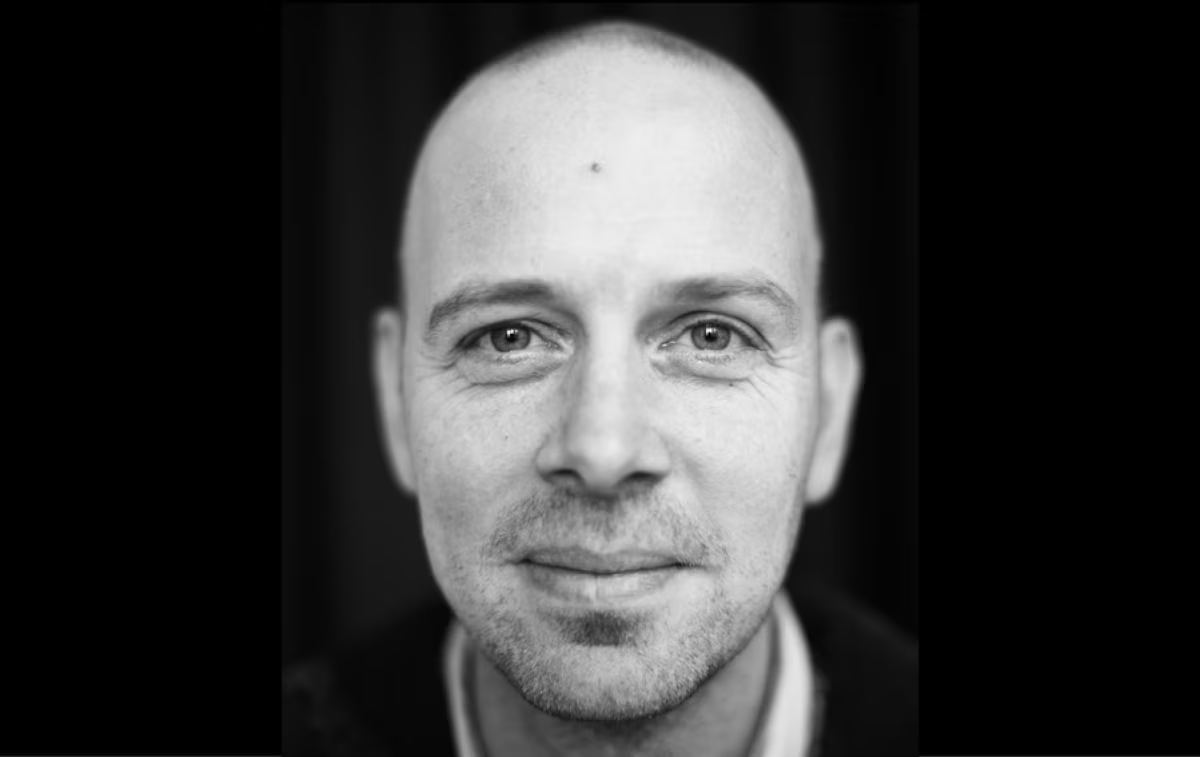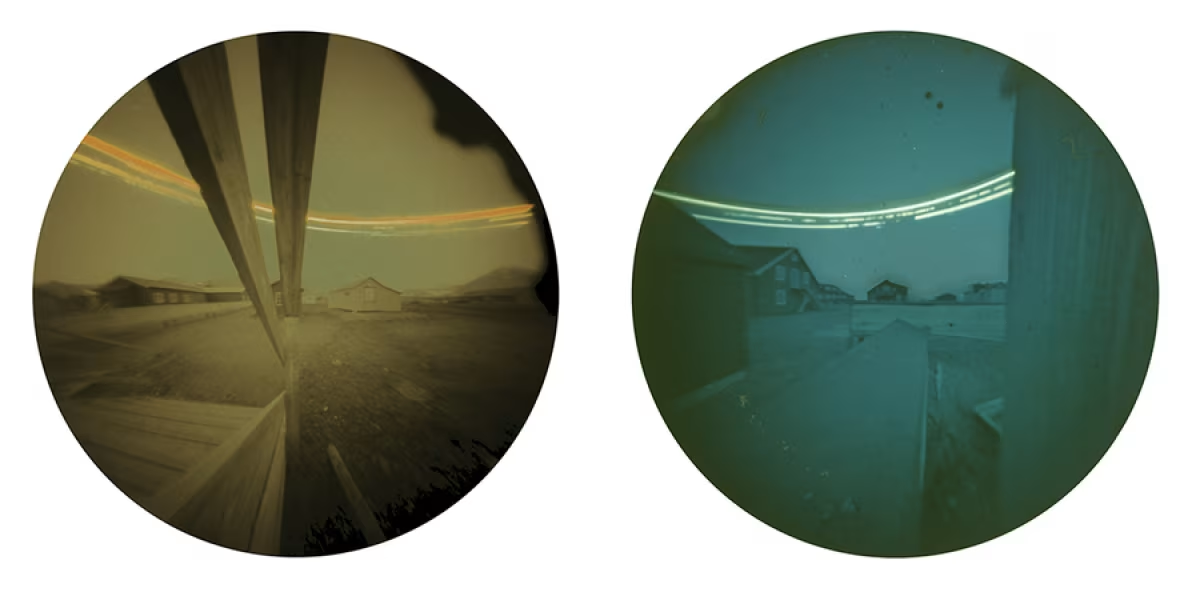PLEASE NOTE: The vessel referred to in this blog is no longer in our fleet. We also no longer offer expedition cruises in Northern Norway. Please see our numerous other voyages that operate in the Arctic and Antarctica.
The Arctic work of art
Most of us lucky enough to visit the Arctic recognize instantly how picturesque it is, far more striking than the most expert photograph can convey.
Still, we have to try.
But few polar travelers probe as deeply into the region’s photographic potential as Dutch video artist Udo Prinsen, who in November, 2017, embarked on a week-long Arctic voyage around Spitsbergen to complete his Shapes of Time photo series.
We spent some time chatting with Prinsen, who made a second voyage in November, 2018, aboard our historic schooner, s/v Noorderlicht, for yet another Arctic photo endeavor.

What led to your Shapes of Time photo series? Did the trip evolve out of the project or the other way around?
Ever since I was a child, Spitsbergen has fascinated me. I would look at the world map and fantasize about what it would be like there, so close to the North Pole.
A friend and I would invent countries and islands, drawing our own maps, complete with mountains, glaciers, and fjords, and I would base many of my maps on the coastline of Spitsbergen.
I dreamed of traveling to faraway places like that.

And this dream eventually became a reality.
Yes, though it did take some time.
As an adult, I began searching the web for interesting projects and places that were looking for artists in residence. I came across the SEES NL scientific expedition to Edgeøya and Spitsbergen.
My memories from childhood instantly came back to life, and I immediately signed up. It took about a year before I could depart for Longyearbyen, but it was well worth the wait.
I was able to work in the most spectacular environment I had ever been in.

Did you embark on the voyage with any specific goals in mind?
I wanted to emphasize the time it took for many of the early scientists to complete their measurements. I also wanted to put the expedition in a poetic and culturally historic perspective, visualizing time in one image – hence the title, Shapes of Time.
The first winter people stayed on Kapp Lee, on Edgeøya, was 1968 to 69.
Now, fifty years later, scientists are comparing current data to past measurements in order to discover the influence of human activity in this uninhabited area.

How did the polar environment, weather, and wildlife impact your photo series?
The summer sun in Spitsbergen was actually a catalyst for the photo series.
I wanted to capture this idea of time passing in one image, and this was possible through long-exposure photography and specifically solargraphy. Science deals with measuring, but my challenge was to envision the poetry of what was going on.

When you see the images, I want you to forget about science for a moment and place yourself in the distant past or far future, to find awe in the mystic nature of the Spitsbergen landscape. There are still so many things we don’t understand about this place.
The sun shines above the landscape all summer long, and for me that is symbolic of the time and space we’re trying to understand.

Take us into the technical part of how you accomplished this.
The constant presence of the summer sun allowed me to record the sun’s track on photographic paper. I installed analogue pinhole cameras in June of 2015, opened them, and let the sun pass by for over two months.
After those months, I returned to Longyearbyen for the start of the SEES expedition, during which time I could close and collect the cameras.
Once I was home, I opened the cameras and found the images I needed to digitize for further production.

Did these pictures make up the bulk of your photo series?
Actually, Shapes of Time is a combination of images taken over two years in two locations.
I worked in Longyearbyen myself but also collaborated with Maarten Loonen, the manager of the Dutch Arctic Station in Ny-Ålesund, farther north. In 2016 he collected cameras that had an exposure time of over one year.

They survived the harsh polar winter, snow, hail, wind, and storms to give me some incredible footage that really captures the mystique of the polar landscape.
Sometimes water or frost caught inside the camera, and at first it seemed the paper was harmed, but when I looked closer it often brought about a wonderful effect, like icy frost speckles.

What first inspired you to become a visual artist?
For as long as I can remember, I have always been interested in drawing, filming, and picturing nature, particularly creating ideas and stories that involve natural habitats and animals.
The polar bear has been a long-time favorite, but I have always been interested in birds and natural history as well. In high school I slowly started to realize it could actually become a professional life, and eventually I became interested in creating animated film.

I see animation as a technical film form that gives you great freedom to create anything you want. Drawing, photography, design, and storytelling can all be easily combined into pieces that amaze your audience.

You also seem to be particularly fond of long-exposure photography.
It suits me very well. I like when I can combine research, concept development, creative direction, and add an element of surprise.
Long-exposure photography provides that. I’m free to make any sort of series I want. I can work on the direction of the images and just let the cameras do their job. I know what the results will be, but I also know that a few images will have that magic element of surprise.

How was working in the polar regions different?
When working with a group of scientists in the Arctic, it’s best to come prepared but also be ready to improvise. Often the weather (or presence of a polar bear) is unpredictable, which means a landing can be changed into a Zodiac trip or called off entirely.
One day during the Svalbard cruise, I was ready to land with the first scientist group, so I had a lot of time to create images on a historical site. But because a polar bear was in the area, the crew had to call the landing off and offer a sea trip instead.
I had to quickly decide whether to stop work or experiment with my cameras from the Zodiac.

You decided to take the cameras out, right?
Yes, and eventually the day did deliver very interesting footage, which actually lead to the new project I will research on Noorderlicht this September.
But it’s challenging to work in the Arctic. You’re not traveling with your own car in a developed place, so you need to choose in advance what equipment to bring. What I learned was to just bring one thing and make do with that.
This actually brought some order and calm to my work. We’re used to being able to do five things at once these days, but you just can’t do that on an Arctic expedition.

Has being in the Arctic changed anything about how you work?
I wait, watch, and look before I create an image these days.
The trap is to take too many pictures. Now I usually only have about a dozen on a film negative. This helps me take in the feeling of the landscape.
I used to want to capture everything everywhere, but now I stand still and look around and keep my hands in my pockets until I know for sure I want to take an image home. Visiting the Arctic has taught me to slow down and enjoy the moment.

A great lesson to take into the next project.
Working on Shapes of Time brought me a number of great things, both professionally as privately. I look forward to sharing them with the people aboard Noorderlicht. I’m also looking into producing new work in the Southern Hemisphere.
Penguins instead of polar bears?
Well, they are safer to work with. And they might just sit still long enough for me to study their movements through long-exposure photography.

We can certainly confirm that penguins smell a little different than polar bears.
I’ve heard. Photographs do have their advantages.
For more on Prinsen’s work, visit his website, Facebook page or Instagram page.






